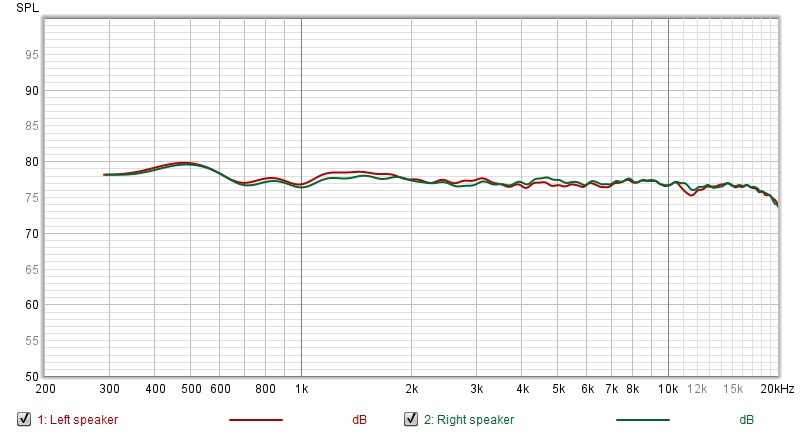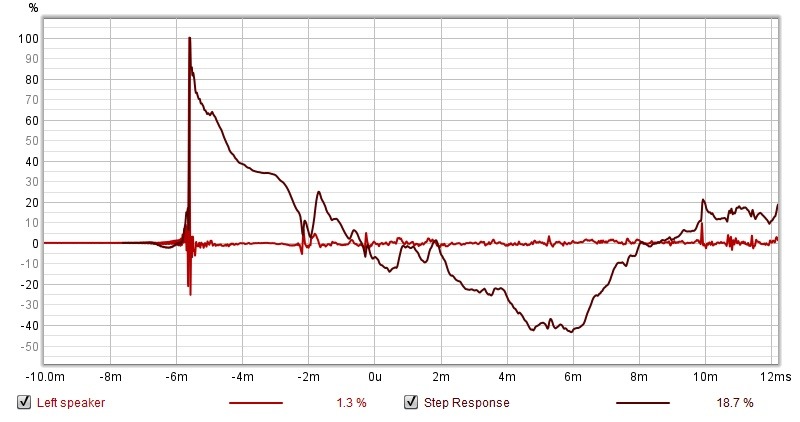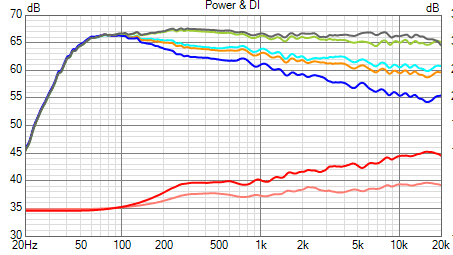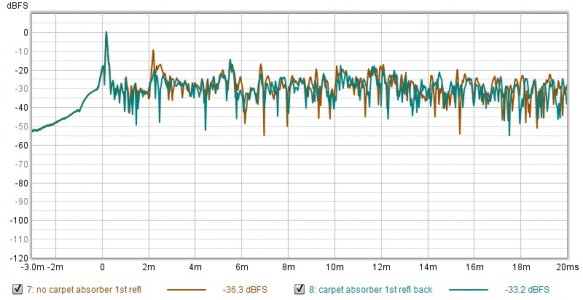Vineethkumar01
Well-Known Member
I keep seeing the 'flatness' argument again and again. That it doesn't sound good etc. My question is why in the first place does one want to stick to this 'on-axis needs to be flat' convention? Are we even mentioning a slope along with that flatness? Most of the time, people keep saying that EQing flat makes speakers sound flat. I feel there are a lot of factors that are being forgotten or not being considered in making such arguments and correlating them with measurements.
Here are a few questions I could think of which one should ask oneself before making general assumptions about the usability of measurements.
1) What is the speaker concept under discussion? full dipole, closed/ported boxed with waveguided/non waveguided mids/highs/lows, full range cardioid? The radiation pattern tells a lot about the possible boundary influences that the speaker's response will show in a room. Moreover, it tells a lot about the amount of sound energy radiating out into the room at different frequency ranges and the general trends in acoustic resolution.
2) Have we done radiation pattern measurements of the speaker under consideration? At least measurements out to a few degrees off axis to study the impact of diffraction-related effects and directivity. If not how are we making design decisions based on a single gated on axis response, especially in a "farfield" listening scenario. We are almost going in blind and deciding things about the speaker based on a very limited dataset
3) What does "flat" response mean? Anechoic flat or in-room flat? Over what bandwidth? With what slope? What is the SPL level under consideration here? Have we ensured that the drivers under EQ are not affected by compression/non-linearity-induced artefacts in their response? Everybody has a preference to sound/speaker response curves based on the genre of music they listen to the most, the general recording quality, and depending on whether it was recorded 1 year ago or 20 years ago. The general consensus is to have smooth speaker frequency response variations. Not "flat" flat responses.
4) Have we even measured the room's impact on the speaker response? This is a big factor. Have we made at least an ETC measurement that comes along with the impulse response measurement? How far below the impulse peak are the reflection-induced artefacts lying? 10dB lower, 20 dB lower? Do we have any idea about the general level of flutter echo and reflection-induced issues? In general, do we have balanced room acoustics suited for the speaker concept under consideration before complaining about the speaker itself?
5) Incorporating corrections to the F-M curve is the recording engineer's job, in general. However, everyone may have different hearing capabilities and may need some adjustments to the relative emphasis that must be applied at different frequency ranges. That is why there are loudness controls on amps and general EQing capabilities in hardware/software, which can be used if the speaker responds well to EQ in the first place. Not every driver is suited for that either.
In general, I find measurements incredibly useful in designing speakers and in studying room acoustics. I look at flatness within a +/- 2 dB range. I tune my speakers' anechoic on axis response with a slope of about -0.2 dB/octave from about 200Hz to 20kHz for a majorly direct radiating type design. For speakers on a horn/large, deep waveguides with near constant directivity, I tune the speakers at about -0.5 or more dB/octave down from 200Hz to 20kHz.
This is one of my speaker configuration's responses with the above kind of tuning (anechoic). I find the sound anything but 'flat' even on music streamed from youtube

Here are the above speakers' step and impulse responses.

Here is the spinorama data

Here are ETC measurements that show up at the listening position with and without a carpet on the floor.

The above measurement shows that the carpet on the floor has significantly impacted the first reflections for the better, and that translates to a significant perceivable effect in sound in the room, like much cleaner imaging with a stereo pair of the speakers mentioned above
My only request to anyone making comments about whether measurements correlate with subjective impressions in general and whether measurements are helpful at all etc, is to please take a comprehensive set of measurements and then decide whether they are helpful or not and whether good measurements/flat response make speakers sound bad etc. Otherwise we are just making baseless allegations
Here are a few questions I could think of which one should ask oneself before making general assumptions about the usability of measurements.
1) What is the speaker concept under discussion? full dipole, closed/ported boxed with waveguided/non waveguided mids/highs/lows, full range cardioid? The radiation pattern tells a lot about the possible boundary influences that the speaker's response will show in a room. Moreover, it tells a lot about the amount of sound energy radiating out into the room at different frequency ranges and the general trends in acoustic resolution.
2) Have we done radiation pattern measurements of the speaker under consideration? At least measurements out to a few degrees off axis to study the impact of diffraction-related effects and directivity. If not how are we making design decisions based on a single gated on axis response, especially in a "farfield" listening scenario. We are almost going in blind and deciding things about the speaker based on a very limited dataset
3) What does "flat" response mean? Anechoic flat or in-room flat? Over what bandwidth? With what slope? What is the SPL level under consideration here? Have we ensured that the drivers under EQ are not affected by compression/non-linearity-induced artefacts in their response? Everybody has a preference to sound/speaker response curves based on the genre of music they listen to the most, the general recording quality, and depending on whether it was recorded 1 year ago or 20 years ago. The general consensus is to have smooth speaker frequency response variations. Not "flat" flat responses.
4) Have we even measured the room's impact on the speaker response? This is a big factor. Have we made at least an ETC measurement that comes along with the impulse response measurement? How far below the impulse peak are the reflection-induced artefacts lying? 10dB lower, 20 dB lower? Do we have any idea about the general level of flutter echo and reflection-induced issues? In general, do we have balanced room acoustics suited for the speaker concept under consideration before complaining about the speaker itself?
5) Incorporating corrections to the F-M curve is the recording engineer's job, in general. However, everyone may have different hearing capabilities and may need some adjustments to the relative emphasis that must be applied at different frequency ranges. That is why there are loudness controls on amps and general EQing capabilities in hardware/software, which can be used if the speaker responds well to EQ in the first place. Not every driver is suited for that either.
In general, I find measurements incredibly useful in designing speakers and in studying room acoustics. I look at flatness within a +/- 2 dB range. I tune my speakers' anechoic on axis response with a slope of about -0.2 dB/octave from about 200Hz to 20kHz for a majorly direct radiating type design. For speakers on a horn/large, deep waveguides with near constant directivity, I tune the speakers at about -0.5 or more dB/octave down from 200Hz to 20kHz.
This is one of my speaker configuration's responses with the above kind of tuning (anechoic). I find the sound anything but 'flat' even on music streamed from youtube
Here are the above speakers' step and impulse responses.
Here is the spinorama data

Here are ETC measurements that show up at the listening position with and without a carpet on the floor.

The above measurement shows that the carpet on the floor has significantly impacted the first reflections for the better, and that translates to a significant perceivable effect in sound in the room, like much cleaner imaging with a stereo pair of the speakers mentioned above
My only request to anyone making comments about whether measurements correlate with subjective impressions in general and whether measurements are helpful at all etc, is to please take a comprehensive set of measurements and then decide whether they are helpful or not and whether good measurements/flat response make speakers sound bad etc. Otherwise we are just making baseless allegations

